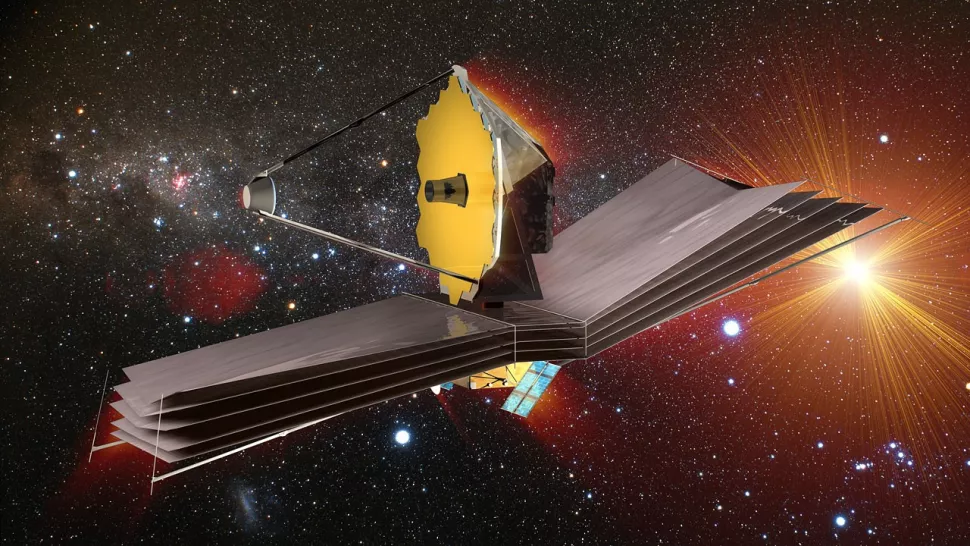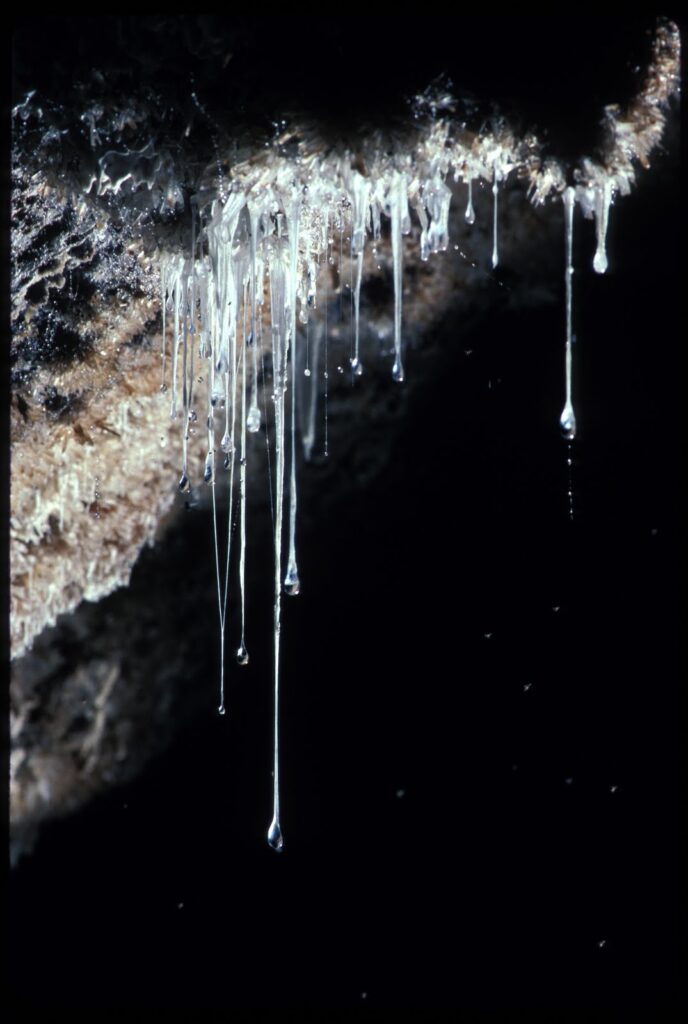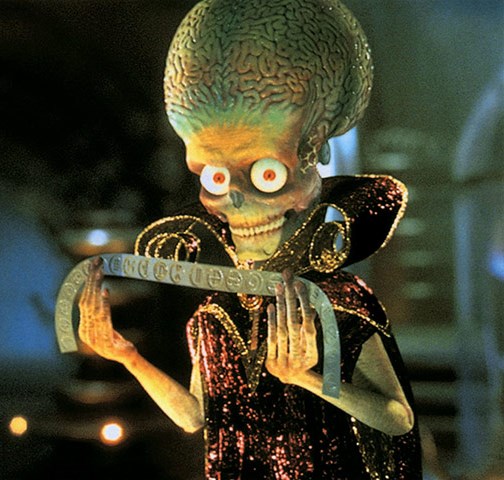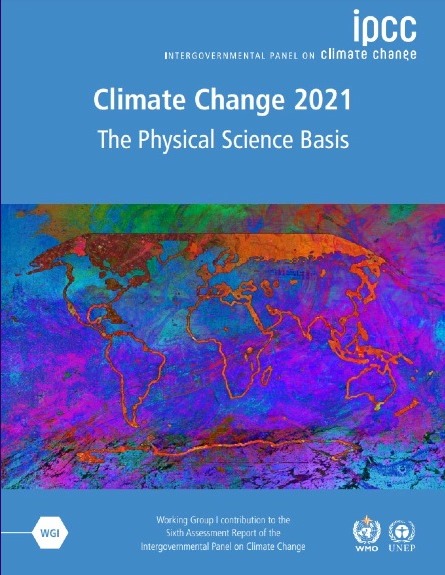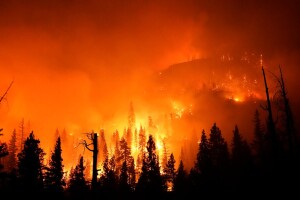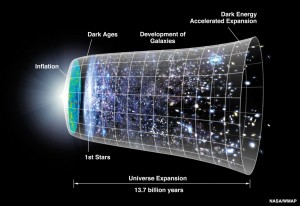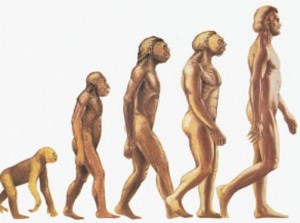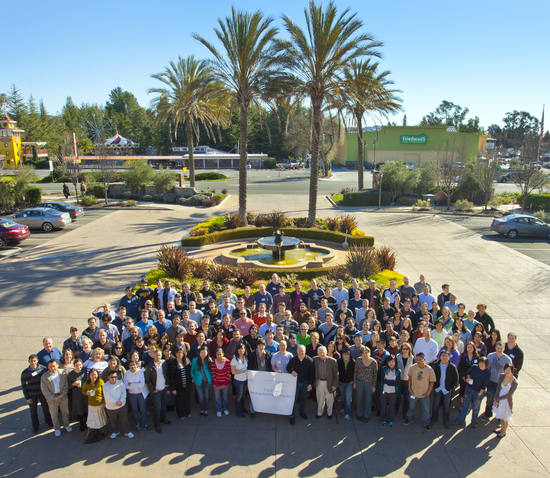The mind-bending hit mini-series on Apple TV, Dark Matter, based on the novel by Blake Crouch, tells the story of a man named Jason who confronts multiple versions of himself sprung from an infinite number of alternate worlds. This is the latest fictional treatment of a scientific speculation known as the “Many Worlds Interpretation.” Unlike the “multiverse,” another popular sci-fi trope, in which parallel universes exist in physical isolation from our own, the many worlds interpretation is exclusively derived from the bizarre Alice-in-Wonderland reality of quantum mechanics. To illustrate quantum reality, Austrian physicist Erwin Schrödinger came up with a cat in a box scenario that ultimately lead to the tee-shirt pictured in this blog, along with computers, cell phones, tablets, and just about every other electronic/photonic device on the market today.
To understand Schrodinger’s cat, the many worlds interpretation, and what any of it has to do with life as we know it, we must start with quantum mechanics, a term freely bandied about with not much explanation for those who didn’t study physics in college. Quantum is the Latin word for “quantity” and the pluralized form, quanta, is the smallest possible quantity of something. The terms quantum and quanta can be applied to waves of energy or particles of matter. Quantum mechanics describes physical phenomena at microscopic scales, i.e., atomic and subatomic particles, where the rules are much different from those in the macroscale world we inhabit.
Foremost among those differences is that in the macro world a physical something is either one thing or another, as in plant or animal. In quantum mechanics, many physical somethings can exist as two different things at once, as in a wave or a particle. Take for example a beam of light, which was long believed to be a stream of particles zipping through space like a shot of pellets. In 1801 British scientist Thomas Young demonstrated that, to the contrary, light travels through space as waves in his now famous “double slit” experiment. A single beam of light is shined on a barrier with two slits. Behind the barrier is a screen. If the beam was made up of particles there should be two spots of light on the other side of each slit through which the particles passed. Instead, Young observed “interference patterns” – alternating bands of light and dark bars – the interference patterns that result when two waves hit the screen simultaneously. Variations of the double-slit experiment performed many times over the years have confirmed the wave-like nature of light.
That said, in other studies over those years by many famous scientists, including Albert Einstein, it was determined that light most definitely does consist of elementary particles, which were given the name “photons.” Furthermore, when the double-slit experiment is carried out with a photon detector mounted on each slit, two spots of light appear on the screen behind the slits rather than an interference pattern. What’s up with that? Counterintuitive though it may be, the very act of measurement/observation determines whether the light travels in waves or as particles.
The most widely accepted explanation – or possible explanation – for this paradox is the “Copenhagen Interpretation,” which was proposed in the 1930s by Niels Bohr and Werner Heisenberg. Under the rules of quantum mechanics, they said, the physical nature of something – its definitive reality – can’t be determined until it is observed/measured. Mathematically this phenomenon is represented as a “wave-function,” an equation that describes all the probabilities of an entity existing in a specific state or having a particular property that we can observe or measure. Until an external intervention – in the form of an observation or measurement – occurs, the entity exists in a “superposition,” meaning it exists in all possible states at once. It is the intervention that “collapses” the superposition into a single state with definitive properties.
Finally we come to the cat in the box, a thought experiment through which Schrodinger sought to show the absurdity of the Copenhagen Interpretation. A box contains a radioactive atom, a vial of poison, and a cat. When the radioactive atom decays it breaks the vial, therefore releasing the poison and killing the cat. However, as there is no way to know when the radioactive atom decays, under the rules of quantum mechanics proposed by Bohr and Heisenberg the cat exists in a superposition of being both alive and dead. Opening the box collapses the superposition into a single state and either the cat jumps out or you wonder how you’ll dispose of the corpse.
Interpretation. A box contains a radioactive atom, a vial of poison, and a cat. When the radioactive atom decays it breaks the vial, therefore releasing the poison and killing the cat. However, as there is no way to know when the radioactive atom decays, under the rules of quantum mechanics proposed by Bohr and Heisenberg the cat exists in a superposition of being both alive and dead. Opening the box collapses the superposition into a single state and either the cat jumps out or you wonder how you’ll dispose of the corpse.
We now know the joke was on Schrodinger. The wave-particle duality first observed in light has been proven true for other quantum entities as well, including electrons, protons, atoms and molecules. Nonsensical as it may sound, the superposition of a wave-function and its collapsing upon intervention into a defined state is as real as it gets. Take a moment to check for messages on your cell phone. You’ve just collapsed the superposition of millions of electrons and photons. The question that began nagging scientists shortly after the Copenhagen Interpretation was announced is this: When a wave-function collapses into one definitive state, what happens to the one or more other states, which prior to the collapse were equally “real.” Proponents of the many worlds interpretation believe they have the answer.
In 1957, American physicist Hugh Everett III, as part of his Ph.D. dissertation, argued that a wave-function never collapses. Instead, all of its probabilities become actualities but in alternate worlds. The instant you open Schrodinger’s box and find the cat alive, an alternate world branches off in which you open the box to find the cat dead. This branching occurs every time a probability in a quantum wave-function becomes an actuality, resulting in an infinite number of alternate worlds continually being formed. As every alternate world is mutually isolated, no entity in one world is ever aware of its counterpart in another. In Dark Matter, author Crouch overcomes this mutual isolation through the combination of a psychotropic drug and a mysterious “magical” box that permits no external intervention.
While providing fertile ground for imaginative story-telling and thought-provoking discussions about the nature of reality, the many worlds interpretation is itself subject to many interpretations. Supporters – known in some circles as Everettians – note that in observing a wave-function by opening Schrodinger’s box, you too become a wave-function, existing in two states, one version who found the cat alive, and one version who found the cat dead. This, Everettians believe, is an elegant way to resolve questions raised by the wave-function equation.
Critics, on the other hand, say the questions raised by the wave-function equation are unanswerable because of our own limitations when it comes to understanding physical reality at quantum levels. As there is no known way to empirically test and confirm the existence of alternate worlds, the many worlds interpretation is at best thoughtful conjecture, more philosophical than scientific, not unlike questioning whether a tree falling in the forest makes a sound if no one hears it.
Myself, I’m a staunch Jamesian, as in the 19th Century philosopher William James who noted that: “A difference that makes no difference is no difference.” With the passage of every single nanosecond, countless measurable quantum events occur that bear no impact whatsoever on the macro world through which we go about our daily lives. With respect to Schrodinger’s cat being both alive and dead, I could go either way. With respect to the many worlds interpretation though, sorry Everettians, if I accept it then I am effectively kissing off any notion of free-will and believing myself to be an individual whose choices in life are meaningful. Forty-eight years ago attending a night class at San Francisco State University (improbably enough a sci-fi course), I saw a young woman sitting in the back of the classroom and made the choice to introduce myself despite the high probability of rejection (she was that far out of my league). There followed a multitude of subsequent choices on both our parts, choices resulting in two daughters, four grandchildren, a bounty of cherished friends, and a trove of shared experiences and memories I like to think are ours and ours alone. Not only do I reject the conjecture that our life together is just one of an infinite number of collapsed wave-function probabilities, I find it terribly sad for those who think otherwise. However, as this world is unimaginable without my cell phone, I do love me some collapsing wave-functions.





